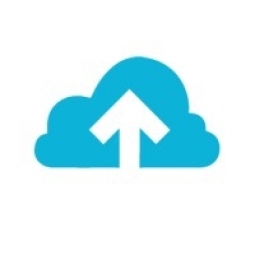Technology Category
- Application Infrastructure & Middleware - Event-Driven Application
- Platform as a Service (PaaS) - Device Management Platforms
Applicable Industries
- Healthcare & Hospitals
- National Security & Defense
Applicable Functions
- Maintenance
- Warehouse & Inventory Management
Use Cases
- Cybersecurity
- Tamper Detection
Services
- Cybersecurity Services
- System Integration
About The Customer
The customer is one of the largest pediatric healthcare providers in the United States, serving over a quarter million children across multiple locations each year. They rely on over 5,000 medical devices, including MRI, CT scan, and infusion pumps, that are connected to their network. This network connectivity allows healthcare teams to share health monitoring data, procedures, and outcomes more efficiently. However, the safety, availability, and accessibility of these devices were at risk. The healthcare provider is committed to ensuring the security of their medical devices and quickly addressing any issues to comply with the Health Insurance Portability and Accountability Act (HIPAA).
The Challenge
One of the largest pediatric healthcare providers in the United States, serving over a quarter million children across multiple locations each year, was facing a significant challenge in ensuring the security of their network-connected medical devices. The healthcare provider relied on over 5,000 medical devices, including MRI, CT scan, and infusion pumps, to offer complex clinical care. However, the safety, availability, and accessibility of these devices were at risk. Unauthorized access to a device could disrupt devices, steal data, or gain access to other parts of the network. The IT security team struggled to identify the device owner, device make and model, software version, and device location when unusual behavior was detected on a device. There was no single device inventory with a common data format, and there was no easy way to normalize the data for consistency. Remediation was taking too long, putting children’s lives at risk.
The Solution
The healthcare provider chose Nuvolo OT Security for its fully tested, out-of-the-box integration with their security monitoring solution. Nuvolo met their functionality requirements, which included orchestration, automation, and real-time response to security events. Nuvolo’s single device inventory replaced their multiple computerized maintenance management systems (CMMS). The new single inventory consisted of common data fields with normalized data, which was critical to ensure security events could be acted on quickly. Nuvolo OT Security automated the process to create work orders against security event records, creating a shared dashboard view for the HTM and security operations center (SOC) teams. The solution also enabled the healthcare provider to correlate security events to other devices and provided contextualization to help them respond more efficiently to alerts and vulnerabilities across multiple devices within the same timeframe.
Operational Impact

Case Study missing?
Start adding your own!
Register with your work email and create a new case study profile for your business.
Related Case Studies.

Case Study
Hospital Inventory Management
The hospital supply chain team is responsible for ensuring that the right medical supplies are readily available to clinicians when and where needed, and to do so in the most efficient manner possible. However, many of the systems and processes in use at the cancer center for supply chain management were not best suited to support these goals. Barcoding technology, a commonly used method for inventory management of medical supplies, is labor intensive, time consuming, does not provide real-time visibility into inventory levels and can be prone to error. Consequently, the lack of accurate and real-time visibility into inventory levels across multiple supply rooms in multiple hospital facilities creates additional inefficiency in the system causing over-ordering, hoarding, and wasted supplies. Other sources of waste and cost were also identified as candidates for improvement. Existing systems and processes did not provide adequate security for high-cost inventory within the hospital, which was another driver of cost. A lack of visibility into expiration dates for supplies resulted in supplies being wasted due to past expiry dates. Storage of supplies was also a key consideration given the location of the cancer center’s facilities in a dense urban setting, where space is always at a premium. In order to address the challenges outlined above, the hospital sought a solution that would provide real-time inventory information with high levels of accuracy, reduce the level of manual effort required and enable data driven decision making to ensure that the right supplies were readily available to clinicians in the right location at the right time.

Case Study
Gas Pipeline Monitoring System for Hospitals
This system integrator focuses on providing centralized gas pipeline monitoring systems for hospitals. The service they provide makes it possible for hospitals to reduce both maintenance and labor costs. Since hospitals may not have an existing network suitable for this type of system, GPRS communication provides an easy and ready-to-use solution for remote, distributed monitoring systems System Requirements - GPRS communication - Seamless connection with SCADA software - Simple, front-end control capability - Expandable I/O channels - Combine AI, DI, and DO channels

Case Study
Driving Digital Transformations for Vitro Diagnostic Medical Devices
Diagnostic devices play a vital role in helping to improve healthcare delivery. In fact, an estimated 60 percent of the world’s medical decisions are made with support from in vitrodiagnostics (IVD) solutions, such as those provided by Roche Diagnostics, an industry leader. As the demand for medical diagnostic services grows rapidly in hospitals and clinics across China, so does the market for IVD solutions. In addition, the typically high cost of these diagnostic devices means that comprehensive post-sales services are needed. Wanteed to improve three portions of thr IVD:1. Remotely monitor and manage IVD devices as fixed assets.2. Optimizing device availability with predictive maintenance.3. Recommending the best IVD solution for a customer’s needs.

Case Study
HaemoCloud Global Blood Management System
1) Deliver a connected digital product system to protect and increase the differentiated value of Haemonetics blood and plasma solutions. 2) Improve patient outcomes by increasing the efficiency of blood supply flows. 3) Navigate and satisfy a complex web of global regulatory compliance requirements. 4) Reduce costly and labor-intensive maintenance procedures.

Case Study
Cloud-based healthcare solution for Royal Philips
Royal Philips wanted to launch its cloud-based healthcare solution HealthSuite Digital Platform in China to deliver services to help cope with challenges related to urbanization and population growth. Philips wanted to achieve this goal by combining mobile, cloud computing and big data technologies. To bring this platform and product to market, Philips required cloud computing and local technical service capabilities in China, in addition to a flexible IT infrastructure that could handle user requests.








